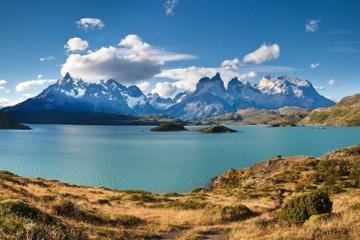« ARGENTINA • Discover Argentina • El Calafate
Discover magical El Calafate
Take your time exploring El Calafate, for there is much to see and you won't want to miss any of it. The city is known as the 'Capital of Glacier Country', as these icy blue mammoths are in abundance here. Visit Los Glaciares National Park for an upclose look at these giant ice sculptures, and watch as they crack.
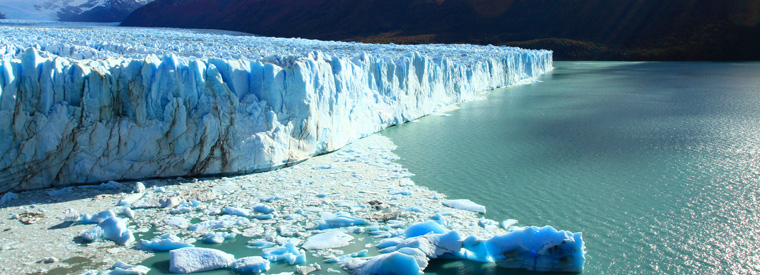
A | B | C | D | E | F | G | H | I | J | K | L | M | N | O | P | Q | R | S | T | U | V | W | X | Y | Z
» Calafate Mountain Park
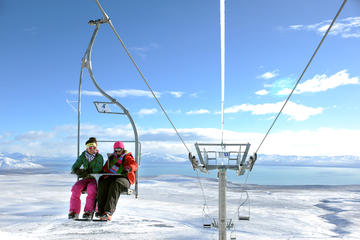
Perched atop El Calafate's nearest peak, with access to a vast stretch of snow-blanketed slopes and rugged mountain trails, the Calafate Mountain Park is an obvious choice for outdoors enthusiasts and there is a range of activities on offer. Winter visitors can make the most of the snow by skiing and tubing, or venture into the wilderness on a snowshoeing or snowmobiling excursion, while summer activities include downhill mountain biking and quad biking, along with kayaking and rafting tours around the nearby lakes and rivers …
» El Chalten

A magnet for hikers and lovers of mountains, the village of El Chalten is flanked by the snowcapped peaks of the mighty Fitz Roy mountain range. Mountaineers come from around the world to climb the 3440m (1,1283-feet) Fitz Roy peak, while hikers follow mountain trails to back country campsites and hilltop lakes. El Chalten is not only a climbing and hiking hub, it's also Argentina's newest town, founded on October 12, 1985. The isolated little town takes great pride in its pristine surroundings and natural environment. The hiking season is December to March …
» Estancia Cristina
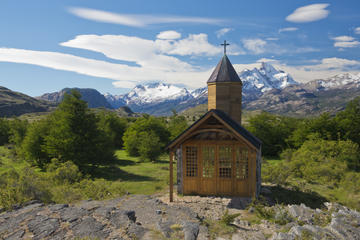
Patagonia, Argentina, is a place that makes people want to pack up their bags and move to this natural paradise. Estancia Cristina, an old sheep ranch (estancia) dating back to 1918, makes that a possibility. In 2005, the site opened its doors as an inn, as well as an agro-tourism day trip destination. A visit to the estancia provides background information about the history of how Argentine Patagonia was settled, in addition to explaining the functions of the farm. A Patagonian barbecue is a highlight of the region and to this site specifically, which normally features spit-roasted lamb …
» Huemul Glacier
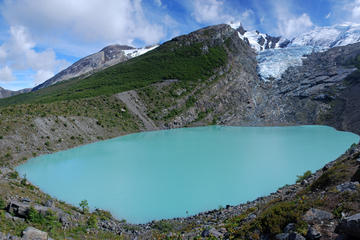
Huemul Glacier is named for a fairly rare species of deer. However, on a trip from El Chaltén over toward the Chilean side of the Andes, you do stand a chance to see one. The area features a native forest and numerous waterfalls that keep the area green year-round. Trips to the Huemul Glacier often start with an hour-long boat trip on the Laguna del Desierto, which is surrounded by trees and backed by lesser mountain chains. After the boat trip, it's easy to find the trail up to the viewpoint for the Huemul Glacier …
» Lago Argentino
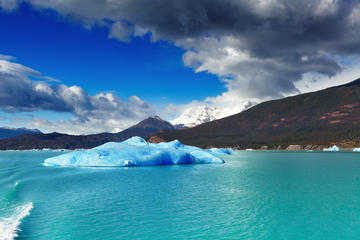
If you're visiting El Calafate, there's no way to miss the vast Lago Argentino. The city sits on the shore of this massive lake, the largest freshwater source in Argentina. It covers 566 square miles and is a result of glacial meltwater, which causes its milky blue color. The lake is part of Argentina's Glacier National Park and is home to one of the area's only advancing glaciers, Perito Moreno, which calves into Lago Argentino. But Perito Moreno is not the only thing to see at Lago Argentino, and many visitors choose a full day of sightseeing on the lake …
» Lago Roca
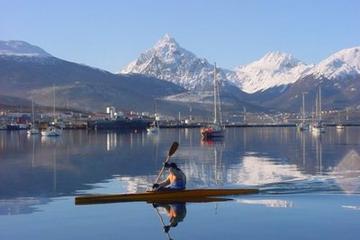
The alpine lake of Lago Roca is in the southern stretches of Los Glaciares National Park, overlooked by the icy peak of lofty Cerro Cristal. The camping, trekking, fishing and climbing in these parts are legendary, including climbs to Cerro Cristal and the Moreno Glacier, and treks along the banks of Lake Roca. The November to April fly-fishing season draws anglers to fish for rainbow trout and to watch the October spawning. Lakeside estancias offer horseback riding tours and traditional asado barbecues, and birdwatchers come here to spot migrating waterbirds on the lake …
» Laguna de los Tres
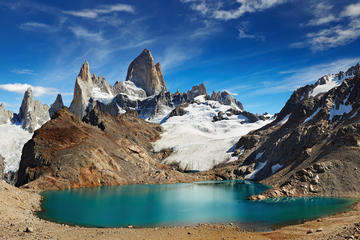
A trip to Laguna de los Tres near Mount Fitzroy in Los Glaciares National Park is in a word, memorable. The lake is accessed only by hiking, which can be split into two days or rolled up in one somewhat more challenging day. Tent camping is available at nearby Campamento Poicenot. For the two-day trip, the campsite is a steep, five-hour roundtrip hike from El Chaltén. Many people make camp here to set out early to Laguna de Los Tres for a glimpse of the early morning sun on the turquoise lake set among the mountains …
» Laguna Nimez Reserve
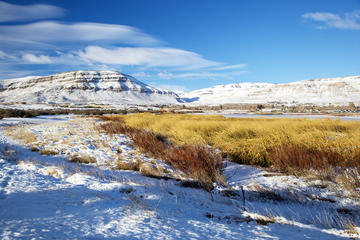
The Laguna Nimez Nature Reserve is an important conservation spot and stopover for many migrating bird species. It's also home to dozens of Patagonian bird types, and in all, there are about 80 species that can be seen here. Most notable are the flamingoes and black-necked swans, but visitors are also likely to see geese, silvery grebes, ibis and hawks, among others. The reserve has a walking path of about a mile and a half that runs in and out of vegetation with full vantage of the two lagoons in the middle …
» Laguna Torre
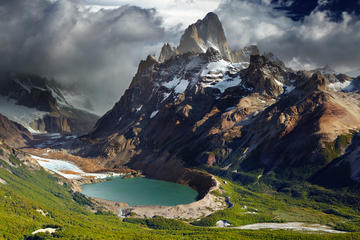
There's no doubt the small town of El Chaltén has incredible scenery. Located about three hours from the city of El Calafate, it is known as the hiking capital of Argentina, with the trail to Laguna Torre as a hard-to-beat spot. The trailhead is easy to find and begins with a gentle uphill walk through native beech forests. The Fitz Roy River flows alongside, and just 15 minutes into the hike, you'll come to the first viewpoint over the Cascada Margarita waterfall. The hike continues uphill for a couple of hours …
» La Leona Petrified Forest
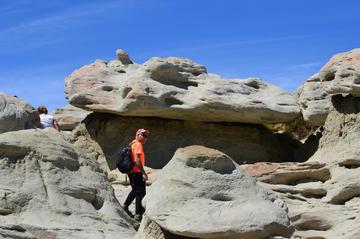
Before Patagonia was peppered with glaciers and jagged, snow-capped peaks, it was a vast plain of lush forests where dinosaurs roamed the Earth. Granted, that was 100 million years ago, and Patagonia today is vastly different from those early days of its founding. At La Leona Petrified Forest, however, visitors have the chance to literally walk through prehistoric Patagonia. This 2,000-acre depression in the Earth is amazingly frozen in time, where massive trees and dinosaur bones still lie on the dusty Earth …
» Mount Fitz Roy
Mount Fitz Roy, the highest mountain in Los Glacieres National Park, rises 3,405 m (11,168 ft) above the bare, sculpted mountains with blowing snow to a peak that only serious climbers will even consider. Its neighbor, 3,128 m (10,260 ft) Cerro Torre is no easier to crest, but their magnificent spires crown the parkland with its most recognizable formation. Serious climbers can attempt either mountain between November and February, but keep in mind that even in summer, clear days are not guaranteed …
» Onelli Glacier
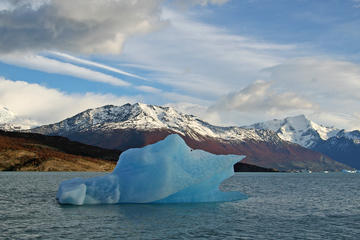
Visits to the Onelli Glacier are usually part of a longer cruise of Lago Argentino that includes the Upsala and Spegazzini glaciers as well. The Onelli Glacier is currently receding, like all others in the area, other than Perito Moreno, and visitors witness the extraordinary glacier by boat, navigating the milky-blue waters of Lago Argentino. The glacier in particular does not feed into Lago Argentino proper, but instead drains into Onelli Lake, which is accessible via a walk through a native beech forest from Onelli Bay …
» Parque Nacional Los Glaciares

Parque Nacional Los Glaciares protects Argentina's wild Patagonian expanses of icy glaciers and mountain lakes. With a massive 47 glaciers, the Andean ice cap is the largest expanse of ice outside Antarctica and Greenland. Created by millennia of ice flows from the Andean snowfields, the ice feeds huge Lake Argentino, Lake Viedma and the Rio Santa Cruz. The national park's most famous glacier is the Perito Moreno Glacier, safely viewed via lookout platforms and renowned for its dynamic movement and dramatic ice falls …
» Perito Moreno Glacier
In addition to its enormous beauty, it is the planet's 3rd largest reserve of fresh water and one of the continent's last advancing glaciers. It slowly pours, in crackling celestial blue, from the granite spires of the Chilean Paine Mountains into Argentina's Los Glaciares National Park. The glacier is a kinetic attraction, emitting sonic booms as it calves icebergs the size of skyscrapers into placid Lago Argenito. Every decade or two, it extends its reach just a tad too far, forming graceful ice bridges and tunnels just a bit too thin to hold …
» Upsala Glacier
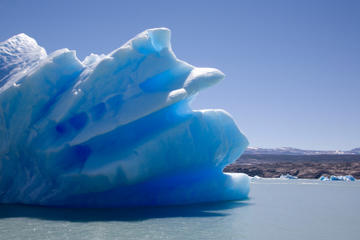
The Upsala Glacier upstages even Perito Moreno in scale. South America's largest glacier, Upsala measures 50km long and 10km wide (31 miles long, 6 miles wide). It's only from the water of Lake Argentino that you can really appreciate the glacier's magnitude and crystalline beauty. Forests surround the glacier and lake, and icebergs that have tumbled from the glacier's peaks fill the water. From the glacier, you can hike to the iceberg-dotted waters of Lago Onelli and take in vistas of blue-white ice floes, jagged mountains and pristine waterways stretching to the horizon …
» Viedma Glacier
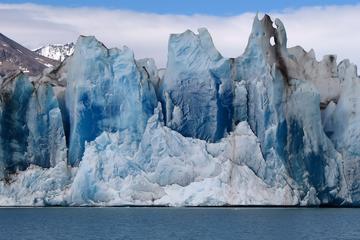
The Southern Patagonian Ice Field is the third largest in the world and the most important source of freshwater in South America. It covers 5,000 square miles (85 percent of which are located in Chile, and 15 percent in Argentina) and is the birthplace of 48 large named glaciers, including the famously still-advancing Perito Mereno and the Viedma Glacier - the largest in Argentina. Viedma, like Perito Moreno and many others, is located within the UNESCO-protected Los Glaciares National Park. Viedma is best accessed from the small town of El Chaltén …
« ARGENTINA • Discover Argentina • El Calafate




